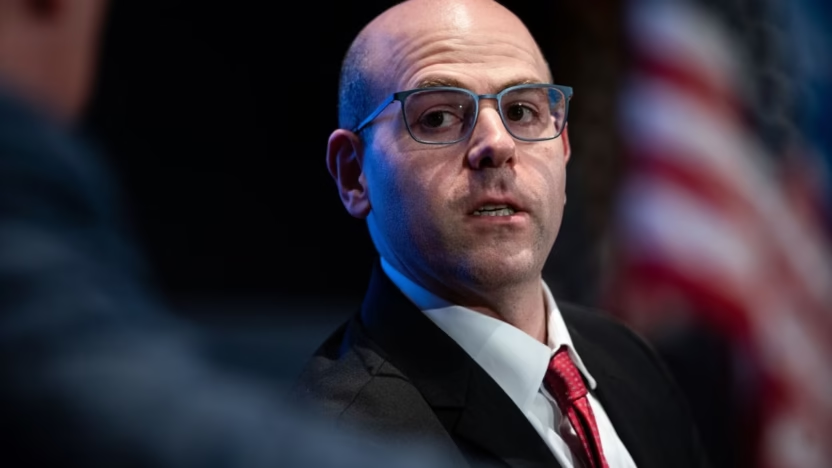On 7 August 2025, President Donald Trump announced his intent to nominate Stephen Miran to the Federal Reserve Board of Governors. The announcement immediately drew attention because Miran is widely regarded as a pro-growth economist who supports lower interest rates and favors a stronger role for presidential influence over Federal Reserve policy. According to publicly released information, Miran would temporarily fill a vacancy on the Board, and, if confirmed by the Senate, he would serve in that seat until 31 January 2026.
The Vacancy Created by Adriana Kugler’s Resignation
Just one day after the president’s announcement, on 8 August 2025, Adriana Kugler resigned from her position as a governor of the Federal Reserve. Her departure opened the seat that the White House now proposes to give to Miran. Kugler’s resignation set in motion a rapid sequence of events aimed at ensuring that the Federal Reserve Board maintains a full complement of governors. Miran’s nomination therefore arrives at a moment when a replacement is needed to keep the Board fully staffed, even if only on a temporary basis.
A Temporarily Assigned Role
Public reports issued on 11 August 2025 clarified that Miran’s nomination is intended to be temporary while the administration conducts a broader search for a permanent replacement. Although the nomination is limited in duration, it nonetheless positions Miran to participate in Federal Reserve decisions for as long as the interim term lasts. Should the Senate confirm him, his service would continue through 31 January 2026, after which another nominee could assume the post if a long-term appointee is selected and confirmed.
Why Miran’s Policy Views Matter
Miran’s policy preferences are well known: he favors lower interest rates and supports the idea that the president should exert meaningful influence over the Federal Reserve. These stances could significantly shape internal deliberations at the central bank during his tenure. Lower interest rates can stimulate borrowing, investment, and consumer spending, while greater presidential influence could alter the traditional arm’s-length relationship between the White House and the Fed. Because Miran advocates both, his presence on the Board could nudge policy debates toward easier monetary conditions and closer alignment with presidential objectives.
Crypto-Friendly Credentials
There is no direct evidence in public reports that Stephen Miran is widely regarded as a “crypto-friendly” economist or that he has a notable record of advocacy for cryptocurrencies. The available sources describe him as a supporter of lower interest rates, tariff expansion, and increased presidential influence over the Fed, but do not mention a specific stance on digital assets or crypto policy. Therefore, the claim that Miran is “crypto-friendly” is not substantiated by current public information and should be removed or qualified.
The Senate Confirmation Process
Although President Trump has formally announced Miran’s nomination, the seat will not be filled unless the Senate provides its consent. The nomination therefore heads to the Senate Banking Committee for consideration, after which the full Senate will vote on confirmation. Until that process concludes, Miran remains a nominee rather than an active governor. Because the appointment runs only until January 2026, the Senate’s timetable is an important factor; any delay would shorten the window during which Miran could serve and influence policy.
Implications for Monetary Policy
The Federal Reserve’s policy decisions rest on the collective judgment of its governors, and each new member alters the intellectual balance of the Board. Miran’s advocacy of lower interest rates suggests he may push for a more accommodative stance. If he joins the Board during a period of economic uncertainty, his vision could tilt internal debates toward rate cuts or resistance to rate hikes. Because the appointment is temporary, Miran’s window to influence outcomes is limited, yet decisions made before 31 January 2026 could resonate well beyond his tenure.
Presidential Influence and Central Bank Independence
Miran also supports expanding presidential influence over the Federal Reserve. His nomination by President Trump highlights a broader question: how much independence should the central bank retain in setting policy? Advocates of independence argue that monetary policy should be insulated from short-term political considerations; proponents of stronger executive influence believe democratic accountability matters even within central banking. Miran’s presence on the Board could intensify debate on this issue, especially if meaningful policy disagreements arise between the White House and other members of the Federal Reserve.
The Search for a Permanent Replacement
Public reports on 11 August 2025 stated that Miran’s nomination is temporary and that the administration continues to search for a permanent governor. Identifying a long-term appointee involves vetting candidates, assessing their policy views, and navigating the Senate confirmation process. Because Miran’s term, if confirmed, ends on 31 January 2026, the White House has a relatively short period to select and nominate the next candidate. During this interval, Miran could help shape discussions on interest rates and Federal Reserve independence—all topics that a future permanent governor will inherit.
Reactions from Market Participants
Market participants pay close attention to changes at the Federal Reserve because shifts in personnel can affect interest-rate expectations, financial-market sentiment, and regulatory outlooks. Miran’s combination of support for lower rates and openness to presidential influence presents a distinctive profile that investors will track carefully. If confirmed, his voting record and public statements could become key indicators for traders analyzing future Federal Reserve decisions. In the interim, the mere prospect of his appointment may prompt analysts to reassess the likely path of policy between now and January 2026.
Conclusion
President Donald Trump’s 7 August 2025 nomination of Stephen Miran to the Federal Reserve Board of Governors introduces a low-rate advocate into the central-bank conversation—at least temporarily. With Adriana Kugler’s 8 August 2025 resignation creating the vacancy, and public reports on 11 August 2025 confirming the interim nature of the appointment, Miran’s potential term would last until 31 January 2026, pending Senate confirmation. During that period, his support for lower interest rates and greater presidential influence over the Fed could shape the direction of monetary policy debates. Whether or not the Senate acts quickly, the nomination underscores the ongoing importance of Federal Reserve appointments in steering the economic outlook of the United States.




